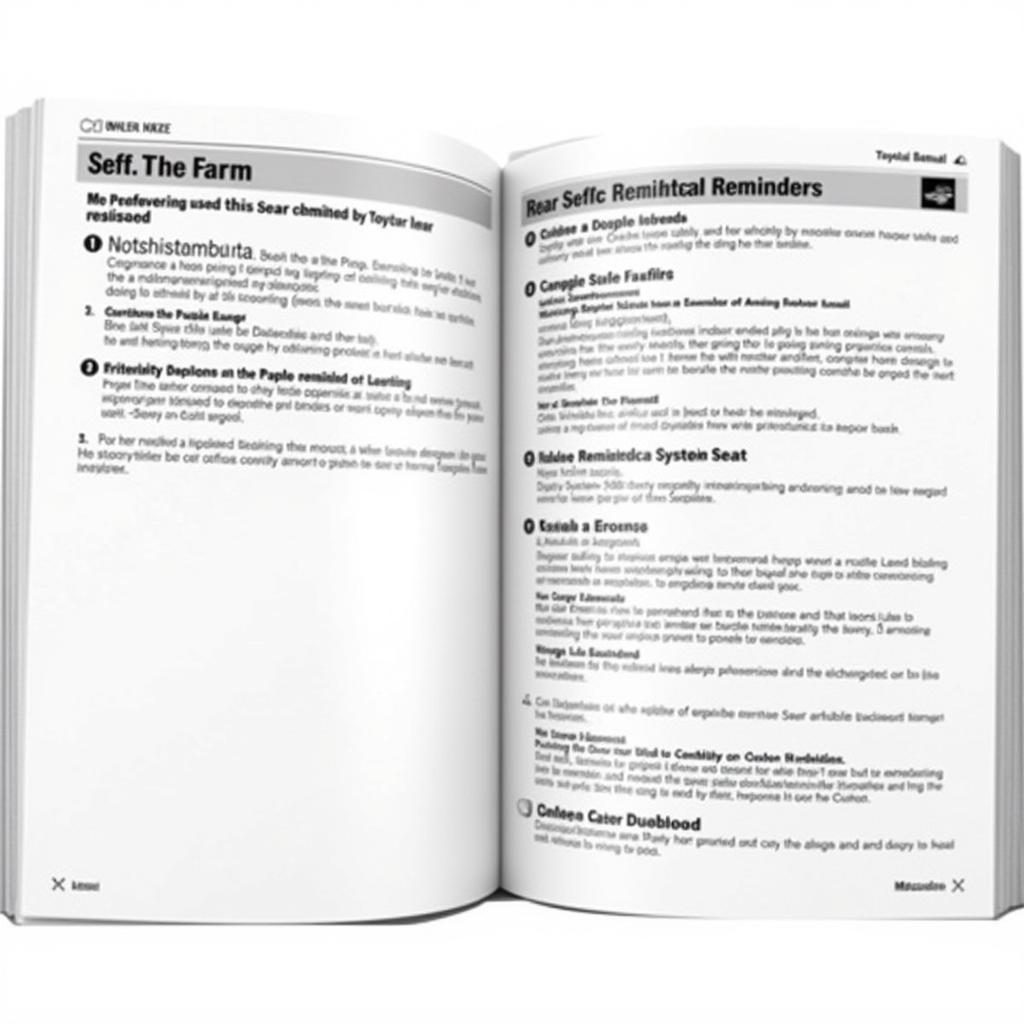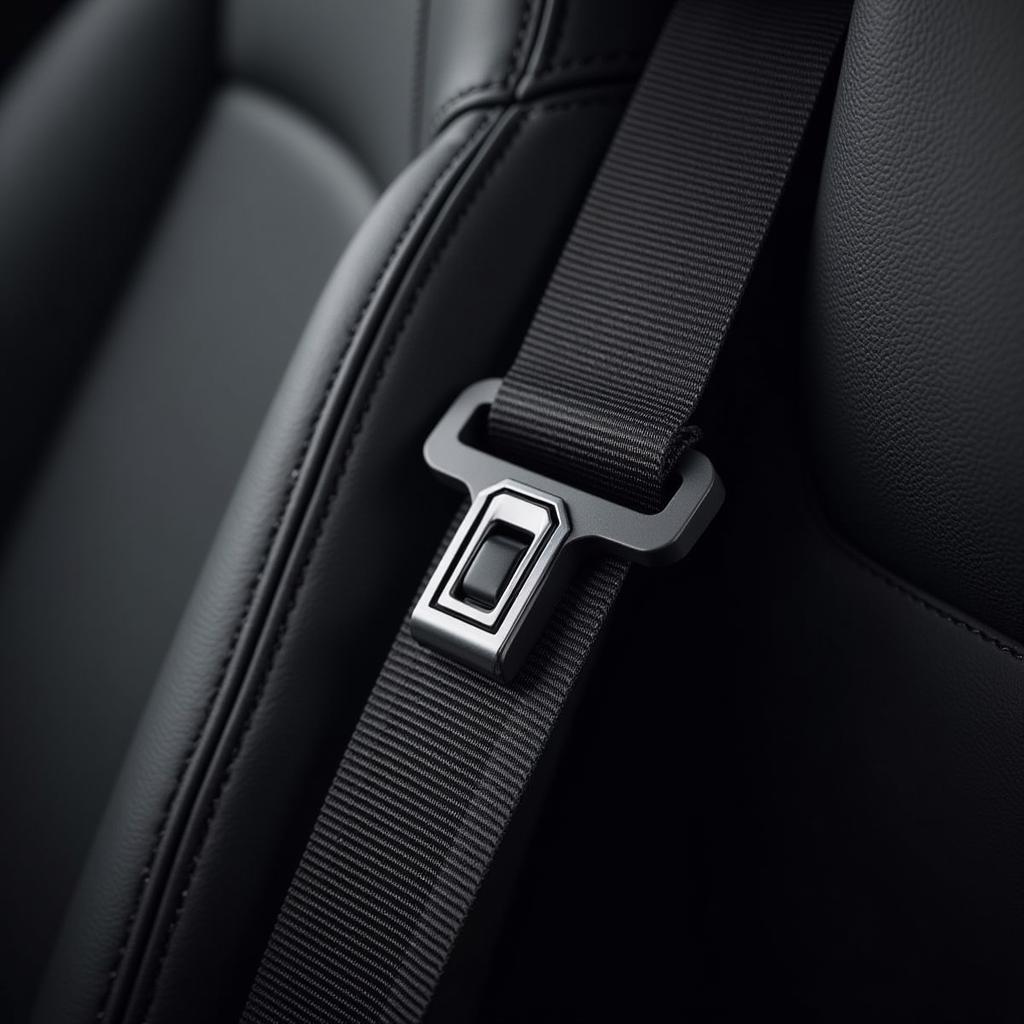The “check rear seat” warning in your Toyota is a crucial safety feature designed to prevent tragic situations where children or pets are accidentally left behind in a parked vehicle. This article will delve into the intricacies of this system, common causes for the warning, and how to troubleshoot them, whether you’re a tech-savvy Toyota owner or just looking to understand your car better.
Understanding the Toyota Rear Seat Reminder System
The rear seat reminder system utilizes door sequencing logic to determine if the rear doors were opened and closed before and after a trip. If the system detects that the rear doors were used prior to your journey but not opened afterwards, it triggers a visual and audible alert upon turning off the ignition.
![]() Toyota Rear Seat Reminder Dashboard Icon
Toyota Rear Seat Reminder Dashboard Icon
Common Causes of “Check Rear Seat” Warning
While the system is incredibly beneficial, it can occasionally trigger a false alarm. Let’s explore some frequent culprits:
- Objects on the Rear Seat: Even a lightweight item like a shopping bag or a laptop can activate the weight sensor in the rear seat, prompting the warning even if no one was actually seated there.
- Faulty Weight Sensors: Over time, the weight sensors in the rear seats can malfunction due to wear and tear, leading to inaccurate readings and unnecessary warnings.
- Software Glitches: Like any computer system, the car’s software can occasionally experience minor glitches that affect the rear seat reminder system, triggering a false alarm.
Troubleshooting the “Check Rear Seat” Warning
If you encounter this warning, don’t panic. Here’s a step-by-step guide to troubleshoot the issue:
- Check the Rear Seat Thoroughly: Begin by physically inspecting the entire rear seat area, including the floor space, to ensure no objects are present. Remove any items, even if they seem insignificant.
- Open and Close Rear Doors Firmly: Open each rear door fully and then close it firmly to reset the door sequence logic. This can sometimes resolve temporary glitches.
- Restart the Vehicle: Turn off your Toyota, wait a few moments, and then restart the engine. This can often clear minor software issues that might be causing the warning.
- Consult Your Owner’s Manual: Your owner’s manual provides valuable information specific to your Toyota model, including details about the rear seat reminder system and potential troubleshooting steps.
 Toyota Owner's Manual Rear Seat Reminder Section
Toyota Owner's Manual Rear Seat Reminder Section
“It’s crucial to remember that while these troubleshooting steps can address many common causes, they might not cover every scenario,” advises Sarah Thompson, Senior Automotive Diagnostic Technician at Advanced Auto Solutions. “If the warning persists, seeking professional assistance from a qualified technician is essential to diagnose and resolve any underlying issues accurately.”
When to Consult a Professional
While the steps above might resolve most common issues, certain situations warrant the expertise of a trained technician:
- Persistent Warning: If the warning continues to appear even after thoroughly checking the rear seat, restarting the vehicle, and consulting the owner’s manual, it’s time to seek professional help.
- Suspected Sensor Malfunction: If you suspect a faulty weight sensor or a deeper software issue, a technician can diagnose the problem using specialized diagnostic tools.
Advanced Diagnostics and Programming Solutions
In the realm of modern automotive technology, remote diagnostics and software solutions have emerged as powerful tools for addressing complex vehicle issues. These services offer:
- Remote Diagnostics: Skilled technicians can connect to your Toyota remotely, analyze the vehicle’s data, and pinpoint the root cause of the “check rear seat” warning without requiring a physical inspection.
- Software Updates and Reprogramming: In some instances, the warning might stem from outdated software or require specific software recalibrations. Remote programming allows technicians to update or reprogram the rear seat reminder system wirelessly.
Conclusion
The “check rear seat” warning in your Toyota is an indispensable safety feature that can prevent potentially life-threatening situations. Understanding its functionality, common causes for activation, and troubleshooting methods empowers you to address this warning effectively. If the warning persists despite your best efforts, don’t hesitate to seek professional assistance from a qualified automotive technician. By staying informed and proactive, you contribute to a safer driving experience for yourself and your loved ones.


